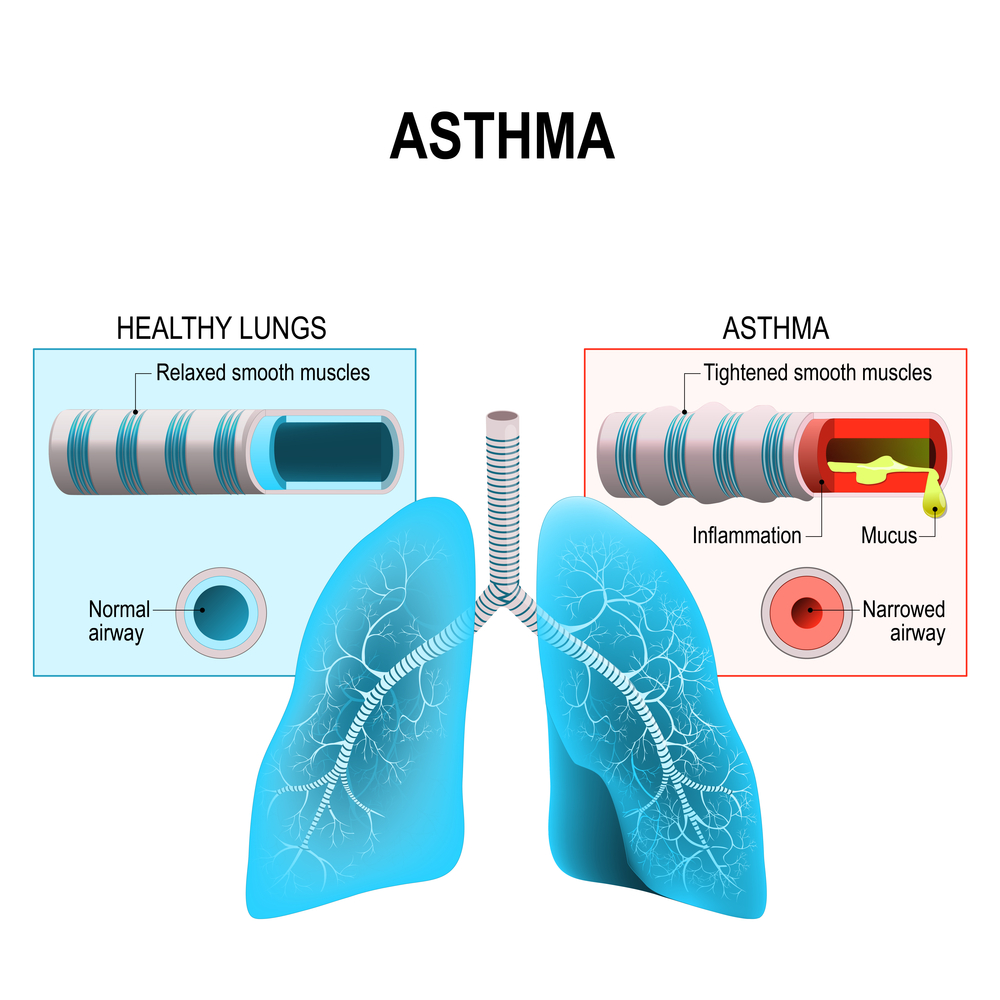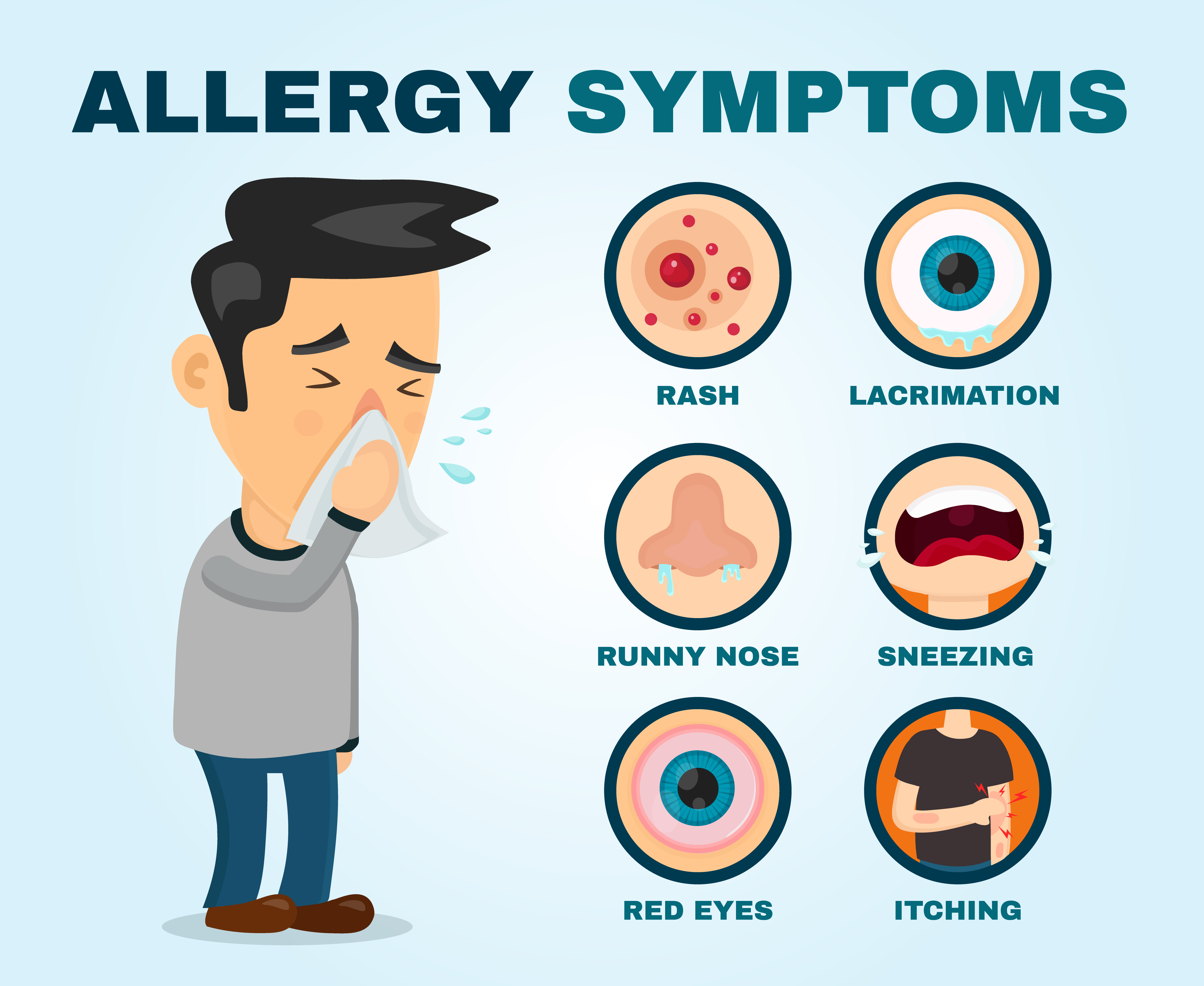
John M. James, MD
Asthma and allergies often go hand-in-hand and there can be a clear relationship between these two conditions.
Asthma-The Low Down
Asthma is a disease of the branches of the windpipe (bronchial tubes), which carry air in and out of the lungs. Asthma is a chronic disease involving the airways in the lungs and affects up to 26 million Americans. If you have asthma your airways are inflamed and over-reactive. The airway passages can become swollen and the muscles around the airways can tighten when something triggers your symptoms. This makes it difficult for air to move in and out of the lungs, causing symptoms such as coughing,  wheezing, shortness of breath and/or chest tightness.
wheezing, shortness of breath and/or chest tightness.
Common triggers for asthma include viral upper respiratory infections, exercise, allergens (pollen, animal dander and/or mold spores) and irritants such as pollutions and smoke. There is no cure for asthma, but once it is properly diagnosed and a treatment plan is in place, you will be able to manage your condition and your quality of life will improve.
Allergies 101
Many people with asthma do have allergies and allergies are one of the most common chronic conditions worldwide (50 million Americans annually). Allergy symptoms  range from making you miserable with nasal congestion, sneezing, runny nose, coughing, as well as itchy, watery, red eyes. If you have an allergy, your immune system mistakes an otherwise harmless substance as an invader. This substance is called an allergen such as cat dander, pollen from trees, grasses and weeds and/or mold spores. The immune system overreacts to the allergen by producing Immunoglobulin E (IgE) antibodies. These antibodies travel to cells that release histamine and other chemicals, causing an allergic reaction.
range from making you miserable with nasal congestion, sneezing, runny nose, coughing, as well as itchy, watery, red eyes. If you have an allergy, your immune system mistakes an otherwise harmless substance as an invader. This substance is called an allergen such as cat dander, pollen from trees, grasses and weeds and/or mold spores. The immune system overreacts to the allergen by producing Immunoglobulin E (IgE) antibodies. These antibodies travel to cells that release histamine and other chemicals, causing an allergic reaction.
The Asthma / Allergy Connection
An allergic reaction typically triggers symptoms in the nose, lungs, throat, sinuses, ears, lining of the stomach or on the skin. For some people, allergies can trigger symptoms of asthma. In the most serious cases, a life-threatening reaction called anaphylaxis (an-a-fi-LAK-sis) can occur. A number of different allergens are responsible for allergic reactions. The most common include: 1) pollen from trees, grasses and weeds, 2) animal dander, 3) mold spores, 4) foods, 5) insect stings and 6) medications. If you or your child have allergy symptoms and/or asthma, an allergy and asthma specialist can help make the diagnosis of asthma and relevant allergies. An allergist has advanced training and experience to properly diagnose your condition and prescribe an allergy and asthma treatment and management plan to help you feel better and live better.
Think you have allergies or asthma (or both!) and want to live better and breathe better, make an appointment today!
Category: Uncategorized


